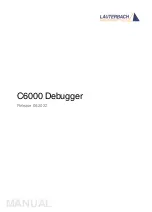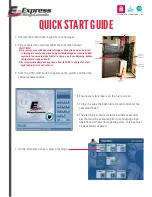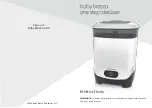
Certain products used for water treatment, particular some dispersant and bio-dispersant additives, might
change the properties of the water (such as the surface tension), which can cause excessive drift loss (water
passing through the eliminators). In such case we recommend to review the water treatment (product type,
dosage) with your water treatment expert.
In case of doubt, a short test can be performed, after cleaning & disinfection, using fresh water without addition
of the concerned chemical (within the limits of the local legislation).
Chemical treatment
1. Water treatment chemicals or non-chemical systems need to be compatible with the materials of
construction used in the cooling system including the evaporative cooling equipment itself.
2. In case of chemical water treatment, chemicals should be added to the recirculating water by an automatic
feed system. This will prevent localised high concentrations of chemicals, which may cause corrosion.
Preferably the water treatment chemicals should be fed into the cooling system at the discharge of the
recirculation pump. The chemicals should not be fed in concentrated form, nor batch fed directly into the cold
water sump of the evaporative cooling equipment.
3. BAC specifically discourages acid dosing as mean of scale control (unless under certain strict circumstances
for open circuit cooling towers with very large system volume and remote sump, or constructed from
stainless steel).
4. A competent water treatment company should be consulted for the specific water treatment programme to
be applied. Next to the supply of dosing and control equipment and chemicals, the programme should
include regular monthly monitoring of the circulating and make up water quality.
5. If it is proposed to operate a treatment programme outside the BAC Water Quality Control Guidelines, the
BAC factory warranty may be invalidated if the water quality is persistently outside the Control Guidelines,
unless specific prior written BAC approval. (Some parameters may be exceeded under certain strict
circumstances.)
It is strongly recommended to check the key parameters of the circulating water quality on a monthly base. See
table: "Circulated water quality guidelines". All test results need to be recorded.
Passivation
When new systems are first commissioned, special measures should be taken to ensure that galvanized steel
surfaces are properly passivated to provide maximum protection from corrosion.
Passivation
is the formation of
a protective, passive, oxide layer on galvanized steel surfaces.
To ensure that galvanized steel surfaces are passivated, the pH of circulating water should be kept between 7.0
and 8.2 and calcium hardness between 100 and 300 ppm (as CaCO
3
) for four to eight weeks after start-up, or
until new zinc surfaces turn dull grey in colour. If white deposits form on galvanized steel surfaces after the pH is
returned to normal service levels, it may be necessary to repeat the passivation process.
Full stainless steel units and units protected by the Baltibond
®
hybrid coating do not require passivation.
An exception to this are units with a galvanized steel coil bundle which do still require the proper
passivation procedure as described here in this section.
In case you can't keep the pH below 8.2, a secondary approach is to conduct a chemical passivation using
inorganic phosphate or film-forming passivation agents. Consult your water treatment specialist for specific
recommendation.
Overflow connection
A slight loss of water through the overflow on forced draft units is normal when the fans are in operation, since
the unit is in overpressure and some saturated air will be blown out to the unit, carrying several droplets of water.
W W W . B A L T I M O R E A I R C O I L . E U
12













































